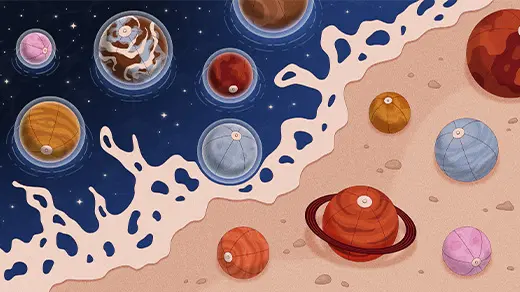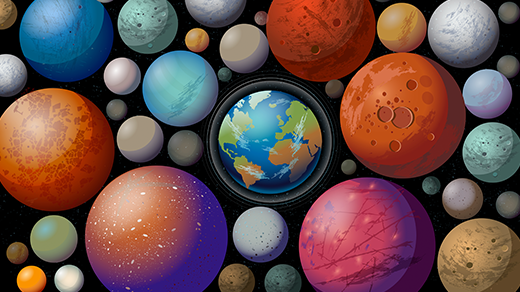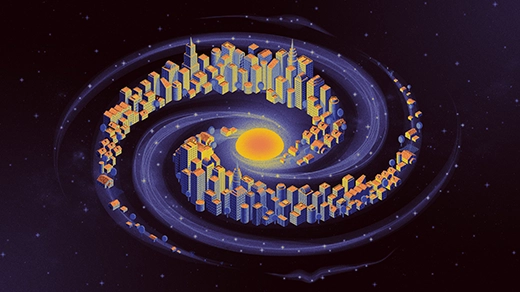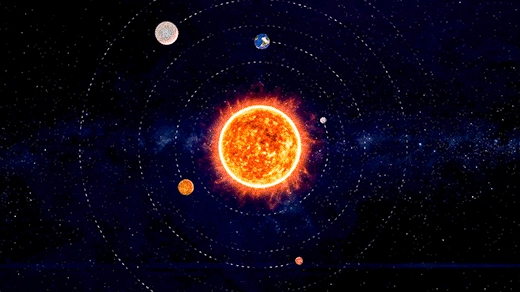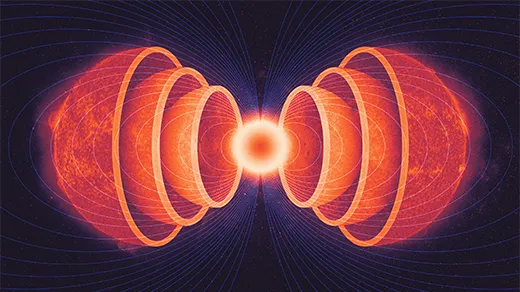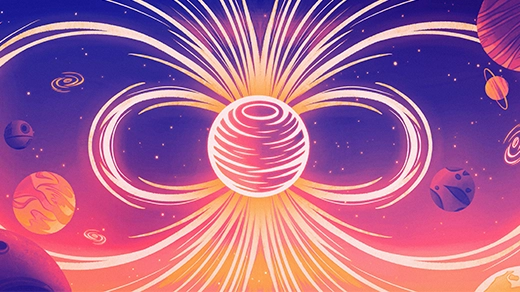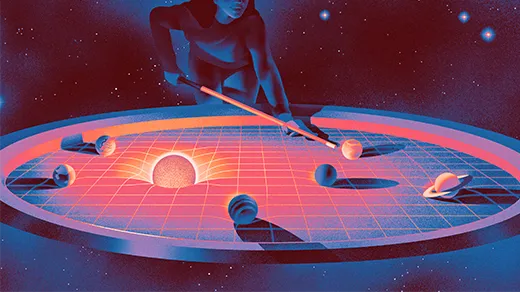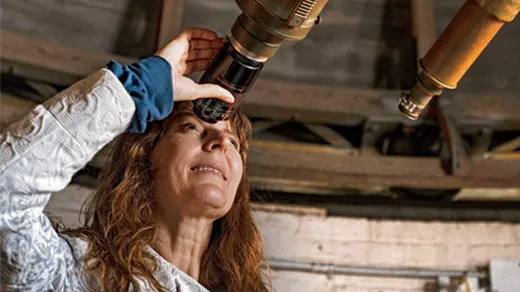What's up in
Exoplanets
Latest Articles
The Road Map to Alien Life Passes Through the ‘Cosmic Shoreline’
Astronomers are ready to search for the fingerprints of life in faraway planetary atmospheres. But first, they need to know where to look — and that means figuring out which planets are likely to have atmospheres in the first place.
How Will We Know We’re Not Alone?
The first planet beyond our solar system was identified just 30 years ago. Since then, thousands have been found and characterized. As we look for more, exoplanet experts are also probing for signs of alien biospheres hundreds of light-years away. In this episode, co-host Janna Levin speaks with astrophysicist and astrobiologist Lisa Kaltenegger about how we’ll know we’re not alone in the cosmos.
The Best Neighborhoods for Starting a Life in the Galaxy
Some neighborhoods in the Milky Way may be better suited for making habitable planets than others.
New Clues for What Will Happen When the Sun Eats the Earth
Recent observations of an aging, alien planetary system are helping to answer the question: What will happen to our planet when the sun dies?
Rogue Worlds Throw Planetary Ideas Out of Orbit
Scientists have recently discovered scores of free-floating worlds that defy classification. The new observations have forced them to rethink their theories of star and planet formation.
Quaking Giants Might Solve the Mysteries of Stellar Magnetism
In their jiggles and shakes, red giant stars encode a record of the magnetic fields near their cores.
Exoplanets Could Help Us Learn How Planets Make Magnetism
New observations of a faraway rocky world that might have its own magnetic field could help astronomers understand the seemingly haphazard magnetic fields swaddling our solar system’s planets.
New Proof Finds the ‘Ultimate Instability’ in a Solar System Model
For the first time, mathematicians have proved that planetary orbits in a solar system will always be unstable.
A Dream of Discovering Alien Life Finds New Hope
For Lisa Kaltenegger and her generation of exoplanet astronomers, decades of planning have set the stage for an epochal detection.
